Wider still and wider – our love of the giant TV screen
By Jamie Robertson From BBC

In a year of High Street gloom one item beamed bright from the sales figures – the giant TV screen.
It may still be a tiny segment of the market but sales are rocketing.
Dixons Carphone saw a 70% surge in the sale of screens over 65in over Christmas, and a tripling of sales of screens sized 75in or more.
John Lewis said sales of 70in TVs have risen 150% compared with last year, partly thanks to a spike in sales from the World Cup.
This isn’t just a one-off. According to the Broadcasters’ Audience Research Board (Barb) sales of screens over 40in have been on the increase since at least the beginning of the decade.ADVERTISEMENT
When you add all the numbers up over the last year across all retail outlets the biggest screens saw a massive 45% increase in sales.
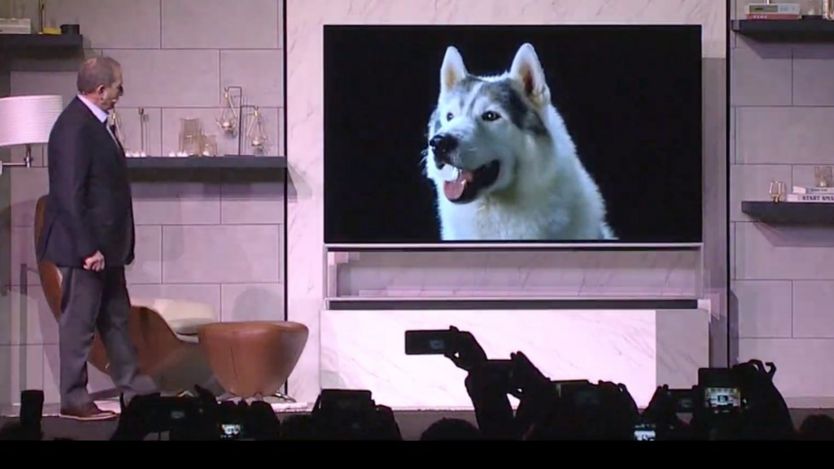

‘I wanna bigger telly’
Jack Weatherill is head of Home Electronics at Futuresource Consulting which collates and analyses data on the media and technology industries.
He said that even though overall TV screen sales are actually falling steadily, the boom in giant screens is simple to explain: “The real motivator, in the end… is ‘I wanna bigger telly’.”
But he admits there are a lot of complex forces at work pushing the popularity of the ever wider screen.
Suddy Bhardwaj, Television Buyer, John Lewis & Partners, said customers were buying bigger “to recreate the cinema experience at home”.
The biggest screens are expensive. It is hard to get one for under £1,000 even in the sales. Below 60in, prices rapidly come down to half that amount.
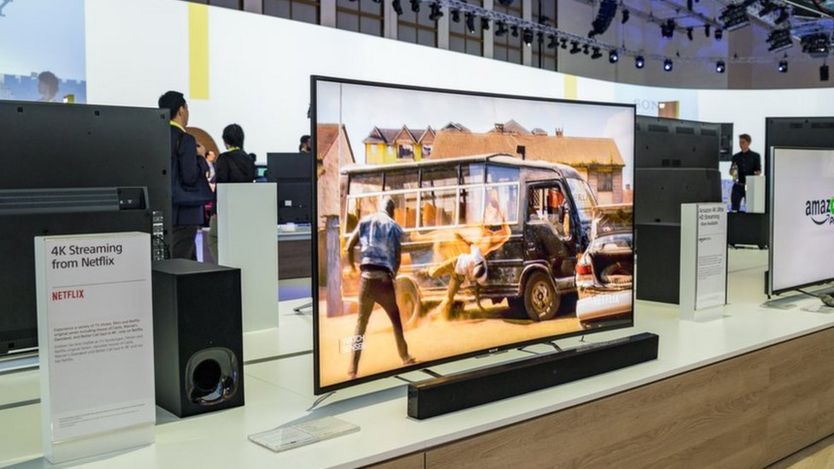

In fact Futuresource says the average spend on a TV screen last year was just £478.
But every year that screen is getting bigger, with some well over 80in already on the market and others even bigger in the pipeline. (Just to be clear, these measurements are made diagonally across the screen and don’t include the plastic bezel or surround. So a 60in screen is actually 52.3in wide.)
Wider still and wider
Barb’s research shows that the more you’re prepared to pay for your TV service, the bigger you want your screen.
In its Viewing Report last year it wrote: “With connected TVs now available for 63% of individuals in TV homes … it makes sense that people will view online TV content on the biggest and best available screen.”
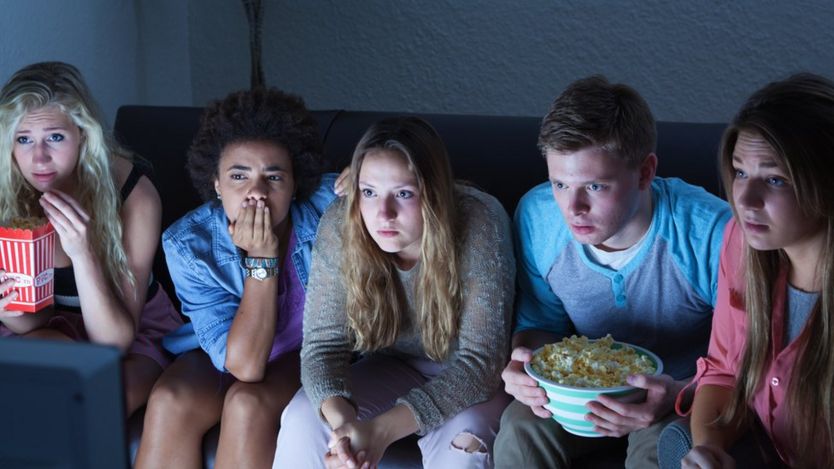

There’s also evidence that bigger screens mean more communal watching. Barb figures from 2017 show nearly 50% of all television viewing is a shared experience and the more people in the household the bigger the screen gets.
If there are children in the household chances are you’ll have a bigger screen – 70% of households with children had a screen of 40in or more.
Return of the living room
The image of the teenager disappearing to their bedroom to box-set binge on their own TV may now be a bit out of date.
There are increasing reasons why he or she should come down to the living room – which is where Barb says most big screens are placed.
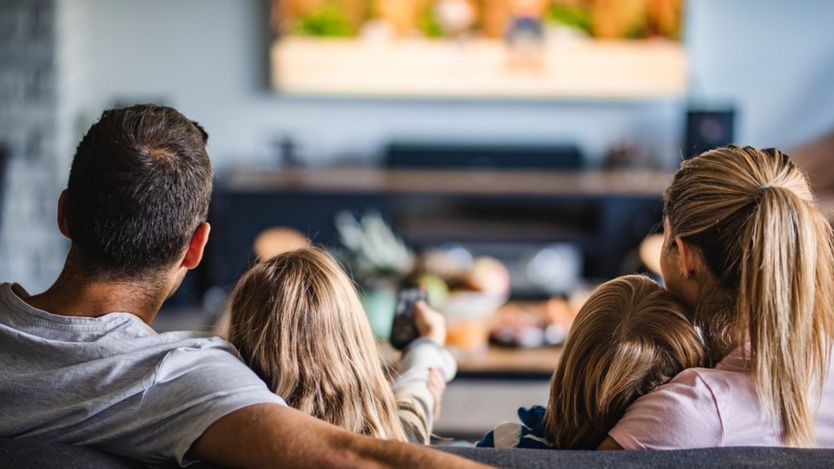

All the really eye-catching developments in display technology – voice activation, Ultra High Definition (UHD) and 4K (huge numbers of pixels and high resolution) OLED and HDR (image and colour enhancement) – are being developed for the biggest screens. And 8K screens (even higher resolution) are also on the way.
Mr Bhardwaj of John Lewis pointed out that the rise of streaming platforms was luring customers back home for movie nights rather than going out to the cinema.
Mark Bater, Senior Category Manager for Large Screen TVs at Dixons Carphone said: “Features such as near invisible cables, frameless TVs, TVs with speakers built into the screen and gapless wall mounts are going to drive sales.”
The big screen has become the most compelling way to access media streaming services from the likes of Amazon, Netflix, NOW TV and of course games.
Mr Weatherill said: “Tablets and phones are taking over the market for second screens, which is why smaller screens are falling away. People want these big screens in the comfort of their living room, so that’s now the stable market.”
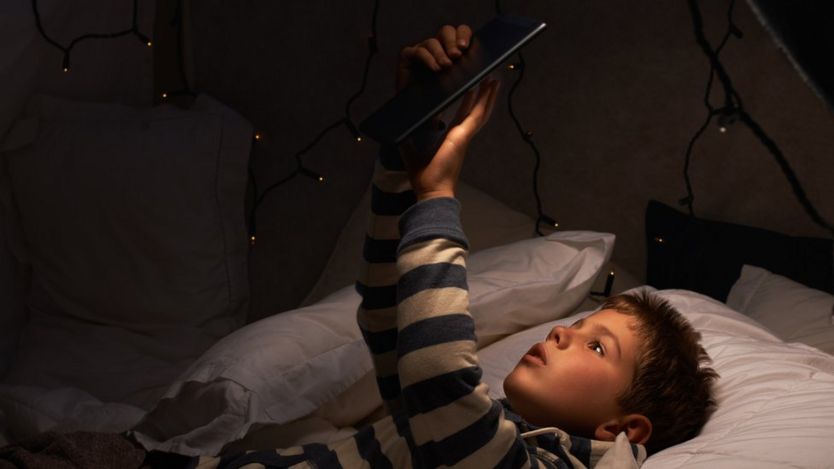

Up-scaling content
However advanced your screen may be, if the content is delivered at a lower quality the experience is likely to be a tad disappointing.
An increasing amount of content is starting to come through for UHD and 4K screens, but 8K content will probably not get its first outing until the Tokyo Olympics next year.
Mr Weatherill said some screens can now adapt to lower quality content. He said: “The very latest screens are now using Artificial Intelligence or AI. AI can learn how to upscale content so it doesn’t have to be, say, a 4K broadcast to get 4K quality, or something approaching it, on the screen.”
He added: “Looking forward we believe two thirds of all TVs sold next year will be 4K. Even so those users will not be accessing much 4K content. They will be future proofing their screens to use them when it’s more available.”


And while the biggest screens have come to dominate a home’s living space, manufacturers are working out ways of lessening the presence of a black 80in void on the wall when it’s turned off.
Some have added shelves, others let it put up the Mona Lisa, a splash of Jackson Pollock, a mirror or perhaps your wallpaper to make it blend into the background.
Others make it vanish altogether.
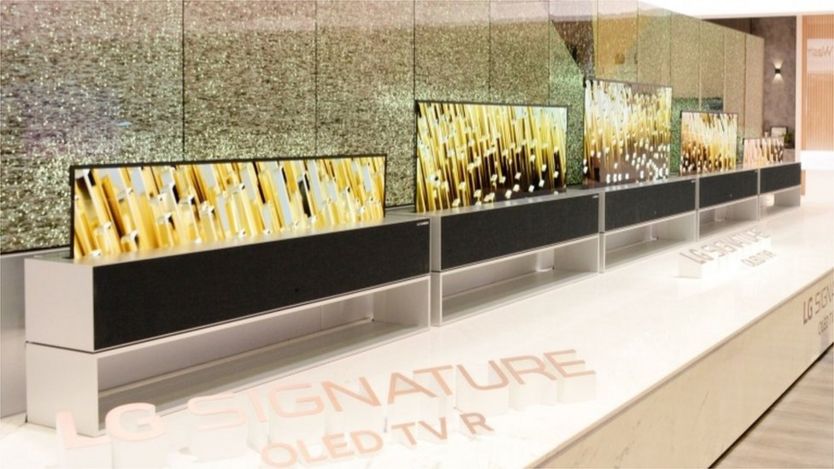

Some of the buzz at this year’s CES trade show in Las Vegas was around LG’s roll-up screen, which slides upwards out of a sound box and then disappears on a voice command back into it.
When it comes on sale, probably later this year, it will be very expensive. LG hasn’t given a figure, but some industry experts estimate it could be anywhere between £11,000 and £38,000.
But what is important, as Mr Weatherill explains, is the direction of travel: “It’s pointing towards a time when screens this size can be, say, portable. Maybe you will be able to simply pick it up and take it away with you to another room – or anywhere.”
For more on this story go to: https://www.bbc.com/news/business-46972140





